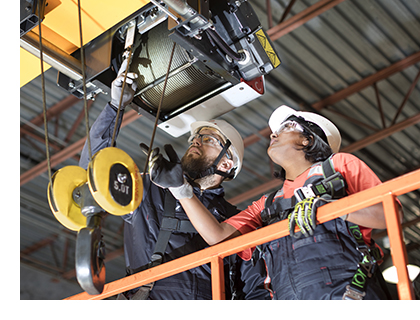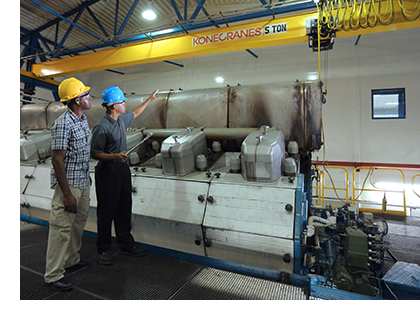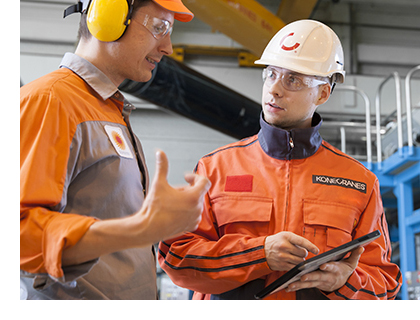Regulations designed for safe operations
 Crane inspections can verify that equipment complies with current standards and laws. Regulations for the care and operation of overhead cranes are designed to keep personnel and operations safe. Not being in compliance with local regulations can increase the chance of accidents, costly fines and disruption of operations.
Crane inspections can verify that equipment complies with current standards and laws. Regulations for the care and operation of overhead cranes are designed to keep personnel and operations safe. Not being in compliance with local regulations can increase the chance of accidents, costly fines and disruption of operations.
Regularly scheduled inspections can also assess the safety of equipment, detect wear and tear and identify potential hazards helping to reduce future incidents.
INSPECTIONS
Compliance Inspections: Designed to satisfy regulatory requirements established by governmental authorities for use in particular jurisdictions.
CheckApp for Daily Inspections: Designed to help crane users quickly and easily record their findings when performing pre-shift and/or pre-lift inspections. It gives users a digitalized and cost-effective way for recording and retrieving daily inspection data that can be used for internal auditing and compliance. Daily inspections are statutory requirement in several countries.
Slings and Accessories Inspection: Designed to inspect non-maintainable load lifting attachments and accessories that are attached to the crane hook during operation. The inspection identifies deficiencies and deviations from local statutory safety and health regulations.
PREDICTIVE MAINTENANCE
Gear Case Inspection: Designed to determine the condition of your crane gears and related components. Can uncover issues that may lead to gear failure and can satisfy local statutory requirements when applicable.
Design Life Analysis: Designed to calculate the remaining design life of crane structures and machineries based on usage history and the standards used in their design. Provides information detailing the current remaining design life of your crane and fulfills the requirements for a yearly DWP calculation of ISO 12482-2014 and AS 2550.1:2011.
CONSULTATION SERVICES
Crane Operator Training: Provides participants with the working knowledge to assist in reducing operation errors that may lead to unnecessary downtime. Crane operator training can provide additional knowledge to help avoid possible serious injury to personnel caused by improper crane operation. Participants also learn the requirements of local regulations for crane operation.
Compliance Gap Analysis: Designed to provide an assessment of a customer's current crane operations, regulatory compliance, and maintenance practices according to applicable regulatory requirements and best practices. It can guide customers in identifying potential gaps in compliance, including safety-critical issues, together with recommendations to help mitigate the associated risk.

 Crane inspections can verify that equipment complies with current standards and laws. Regulations for the care and operation of overhead cranes are designed to keep personnel and operations safe. Not being in compliance with local regulations can increase the chance of accidents, costly fines and disruption of operations.
Crane inspections can verify that equipment complies with current standards and laws. Regulations for the care and operation of overhead cranes are designed to keep personnel and operations safe. Not being in compliance with local regulations can increase the chance of accidents, costly fines and disruption of operations. A regular preventive maintenance program can help you comply with regulations, follow manufacturer’s recommendations for maintenance, and to reduce the likelihood of failures that could result in injuries to personnel.
A regular preventive maintenance program can help you comply with regulations, follow manufacturer’s recommendations for maintenance, and to reduce the likelihood of failures that could result in injuries to personnel. The Konecranes digital ecosystem is powered by the connection of data, machines and people— transforming the delivery of maintenance services and providing you transparency while helping us deliver on our promise to improve the safety, productivity and sustainability of your operations.
The Konecranes digital ecosystem is powered by the connection of data, machines and people— transforming the delivery of maintenance services and providing you transparency while helping us deliver on our promise to improve the safety, productivity and sustainability of your operations.